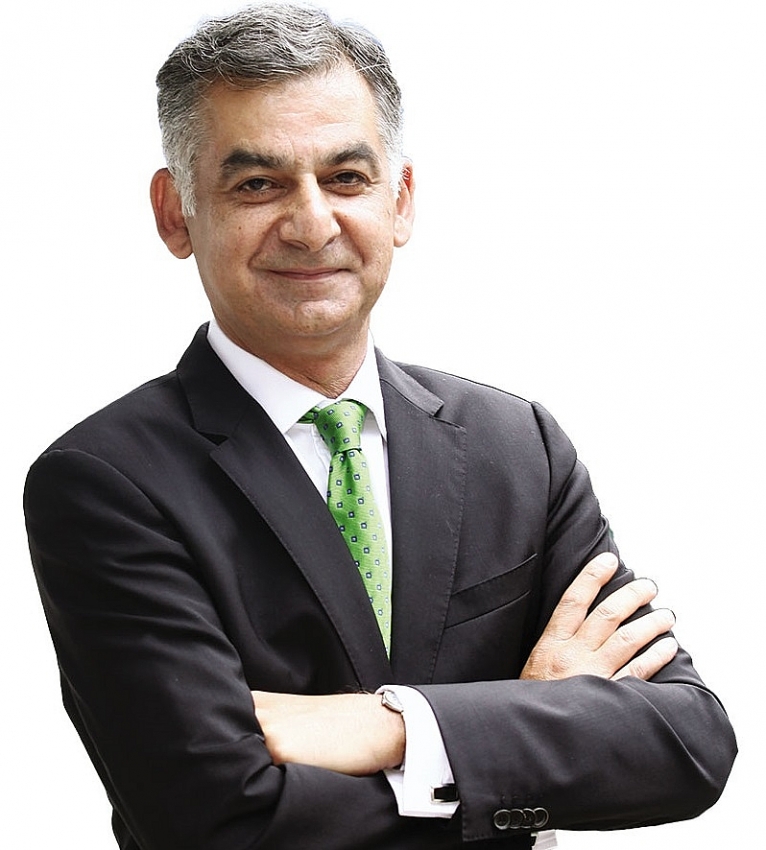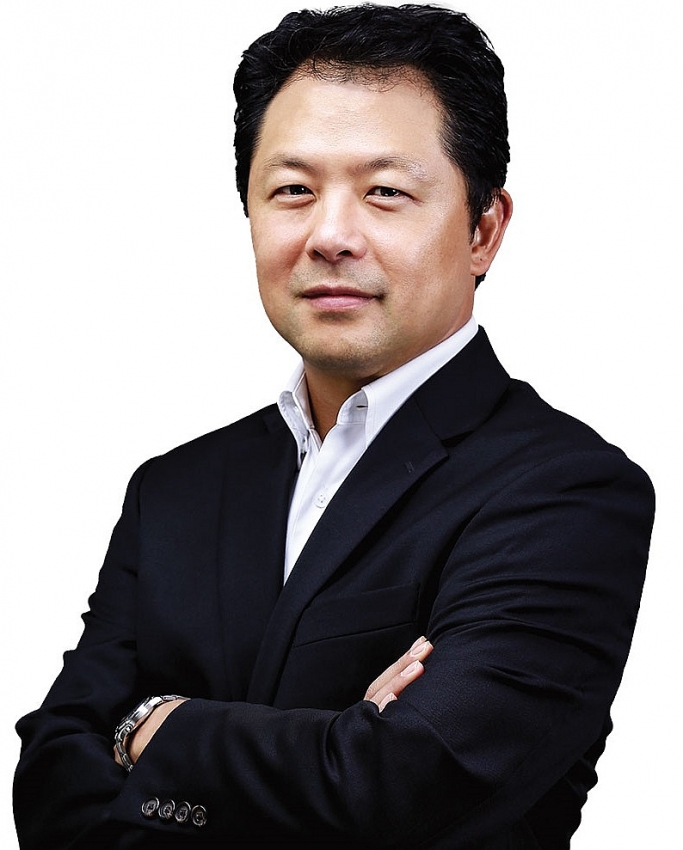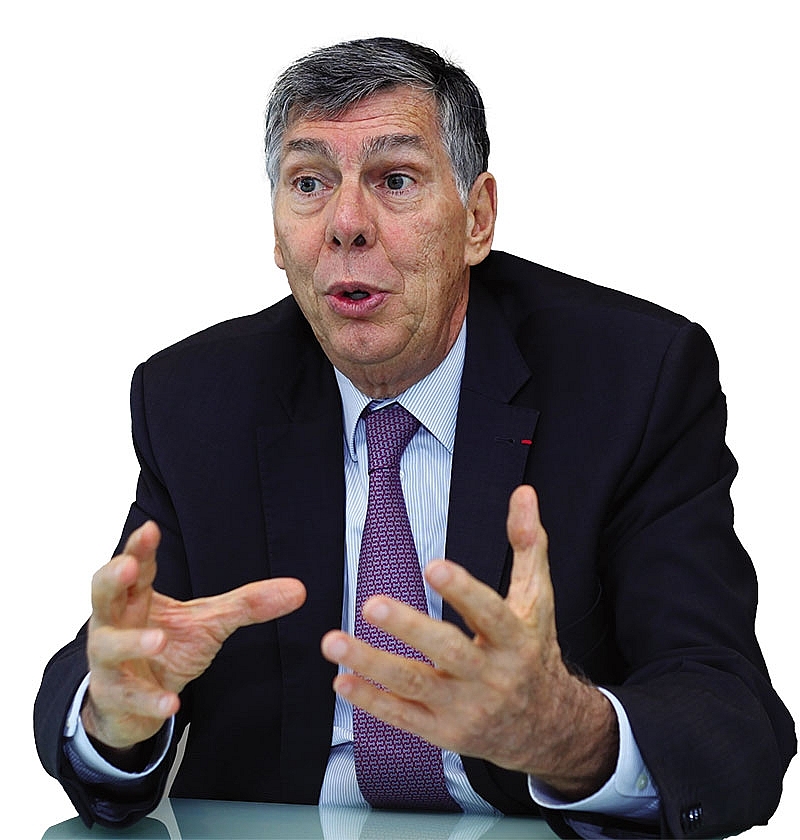Enthusiasm for Vietnam’s economy
On the occasion of the Lunar New Year, VIR spoke to several foreign managers who have worked in Vietnam for years to get their take on the economy’s development, the challenges of their business sectors, and what successes coming to Vietnam has brought for their companies.
Nirukt Sapru CEO Vietnam, ASEAN, and South Asia Cluster Markets, Standard Chartered Bank
 |
| Nirukt Sapru |
Vietnam’s banking sector has become much healthier today than it was a few years ago and is supporting the country’s strong economic growth. The State Bank of Vietnam (SBV) has made tangible progress in the consolidation of the banking sector, though more work still needs to be done. The operating environment for the banking system has stabilised, non-performing loans (NPL) ratio is declining and banks’ health is improving.
The SBV deserves to be complimented for its success in managing monetary and credit policies, stabilising interest and FX rates, NPL resolution, and implementation of the new five year banking restructuring roadmap. This has helped minimise market volatility, increase Vietnam’s export competitiveness relative to other ASEAN economies, attract FDI, and create public confidence towards the SBV’s management capabilities and policies. The government’s determination in resolving NPL and the SBV’s effort in improving the communication of developments in the banking sector has also helped to reinforce market confidence, protect the interests of depositors and investors, and facilitate the development of a healthier, safer, and more effective banking system.
Late last year, Moody’s upgraded its outlook for Vietnam’s banking system to positive from stable for the next 12-18 months, further assuaging worries about the sector’s financial stability risks. This is a positive note.
Achievements in the banking sector have helped lead to the current state of stability which is offering a better environment for businesses to operate while helping to boost domestic consumption and regain investor confidence. That being said, further improvements can be made. In addition to further work on rationalising the banking sector, the government and the SBV should consider additional reforms to the regulatory framework around derivative financial instruments to give Vietnamese companies additional tools to manage their risks.
Vietnam has recently approved a bill that allows ailing banks to go bankrupt. We applaud this move and believe that managing the dissolution of ailing banks will make the banking sector more resilient and allow the banking system to be more capable in supporting businesses and the sustainable economic development of Vietnam.
In the wake of the Fourth Industrial Revolution, we are pleased to see that the sector has been responding well to the trend. The government and the SBV have shown a strong interest in pursuing a strategy of continued digitalisation of the banking industry. We applaud the establishment of the Vietnam Fintech Steering Committee, as well as the SBV’s recent workshop on development of a legal framework for digital banking. Both of these initiatives will help to explore and facilitate the necessary steps for the financial system in Vietnam to support the government’s initiative to develop the economy under the Fourth Industrial Revolution.
We highly appreciate that along with this modernisation, high priority has been put on the importance of conduct and transparency in the public and banking sectors as well as on enhancement of anti-money laundering standards, which will improve the business landscape and contribute to fair competition and an inclusive economy. We recommend that this be continued alongside the development of the banking sector.
Andy Ho Managing Director and Chief Investment Officer, VinaCapital
 |
| Andy Ho |
In 2017, Vietnam experienced what economists call a “Goldilocks” economy, in which high GDP growth significantly boosts the incomes of people and companies, but the economy does not grow so quickly as to heat up inflation.
High GDP growth coupled with low inflation is ideal for investors, so an increase in Vietnam’s GDP growth from 6.2 per cent in 2016 to 6.8 per cent in 2017, along with a decrease in inflation from 4.7 per cent in 2016 to 2.6 per cent in 2017, drove a 48-per-cent increase in the VN-Index last year.
Foreign investors are particularly enthused that Vietnam’s GDP growth is being driven by personal consumption and by an increase in manufacturing activity, because both are sustainable sources of growth based on the track record of other Asian tiger economies such as South Korea and China.
The growth in Vietnam’s manufacturing sector is being driven by FDI inflows, which averaged 7.5 per cent of GDP over the last five years. To put those figures into perspective, China’s FDI inflows peaked at about 3 per cent of its GDP, illustrating how instrumental FDI inflows are to Vietnam’s growth.
Regarding personal consumption, Vietnam’s GDP per capita was nearly $2,400 last year and is likely to reach $2,800 within the next two to three years. The growth trajectory of a country typically accelerates rapidly when GDP per person reaches the $2,800-$3,000 range. For instance, China’s GDP per capita skyrocketed after it passed $2,800.
This year, we expect Vietnam to follow a similar path as in 2017, supported by the continued urbanisation and industrialisation of the country. Currently, only one-third of the country’s citizens live in cities (compared to half in China) and only about 20 per cent of the workforce is employed in highly productive parts of the economy – such as FDI factories. For that reason, much of the growth in personal income going forward will be driven by the movement of workers “from the farm to the factory”.
In our opinion, the positive dynamics discussed above are likely to continue supporting both GDP growth and investors’ enthusiasm for Vietnam in 2018. That said, we believe that maintaining the stable macroeconomic conditions which ensured the stability of Vietnam’s currency last year is the single most important thing the government can do to facilitate the continued inflow of foreign investment capital.
In absolute terms, Vietnam’s valuation is getting more expensive with the price-per-earning ratio going from 16-17x a year ago to almost 20x today. In relative terms, Vietnam went from a discount of 15-20 per cent to now trading at a small premium to the regional average, so by both indicators, it is true that Vietnam is getting more expensive.
The flip side of this is that Vietnam is experiencing strong earnings growth projected at 17 per cent for 2018 (higher than the regional average), so we think this is supportive of the higher valuation. In addition, foreigners are increasingly seeing Vietnam as a very attractive place to invest their money, with over $1 billion of net inflow last year and around $300 million in January of this year alone.
From an international perspective, money has been going into emerging markets and frontier markets as investors view the relative valuations of non-developed countries as much more attractive. In addition, the US dollar has been weak, which usually goes hand-in-hand with outperformance of emerging markets. If this trend in flow continues, Vietnam will not be particularly expensive.
VinaCapital currently manages many funds with different investment strategies. We have domestic and international open-ended funds that focus on the stock markets. We have other funds with different strategies focusing on infrastructure, equitisations, and fixed income.
Our largest fund, Vietnam Opportunity Fund, continues to focus on private investment opportunities like An Cuong and Thai Hoa Hospital. We believe that all of these strategies have the potential to deliver strong risk-adjusted returns in 2018 and over the next two to three years.
Alain Cany Country Chairman, Jardine Matheson Vietnam
 |
| Alain Cany |
I have seen a lot of very impressive changes in Vietnam over the last 20 years. First among them is the way that Vietnam has changed itself from state monopoly status to a market economy with an impressive development of the private sector and reduction of poverty.
Step by step, with the integration of Vietnam into many international organisations such as ASEAN or the World Trade Organization, upgrading the legal system, and signing free trade agreements with many countries, the road map for Vietnam’s future is very good and I think everyone in the country will benefit from it.
Vietnamese entrepreneurs are very active and becoming a driving force to lead the economy, with less control from the government. Of course, there are winners and losers, but overall, most of the people benefit.
I believe in the future of the country and with its hard-working population, its stable political system, a gradual-but-real opening of the economy, free trade agreements, quality foreign investments, and the emergence of Vietnamese national champions like Vinamilk and Thaco, Vietnam will become a successful regional player.
I like Vietnam very much, particularly the Vietnamese people. My children are living in the US and Canada, but my wife and I think that we will certainly retire here, to stay for many more years.
I have made a lot of friends here, more than anywhere in the world. Moreover, I have some close friends whom we consider brothers and sisters. We are almost a family. Vietnamese people are friendly, hard-working, optimistic, and they have a positive outlook on the future.
Something I dislike about this place is the lack of awareness of people for the environment, especially in the countryside. I dislike it, but I understand the reasons behind it. It will take time for Vietnam to improve this awareness. I also dislike corruption, red tape, the air pollution in Ho Chi Minh City and Hanoi, and traffic jams.
Jardine Matheson started its business in Vietnam in 1992, but when I came in, it ran a modest business with two prime office buildings in Hanoi, Schindler lifts operations, and a shareholding in ACB. I started with them in August 2007, more than 10 years ago now. Jardine Matheson likes new partnerships and we try to localise our operations in all countries we operate in.
In Vietnam, we have been lucky to find and support great partners like Truong Hai Auto (Thaco), REE Corporation, and – more recently – Vinamilk.
Aside from this strategy, we introduced some new franchises to Vietnam, like Pizza Hut, Starbucks, Schindler Lifts, and Guardian Health and Beauty stores.
In real estate, Jardine Matheson’s subsidiary Hongkong Land has developed high-quality buildings in Hanoi and Ho Chi Minh City. They are currently completing ‘The Nassim’ in Thao Dien in District 2 of Ho Chi Minh City in partnership with Son Kim Land. Very soon, they will start a beautiful new project in partnership with CII, along the river in Thu Thiem.
They are discussing several new projects. We also hope to bring our luxury hotel brand Mandarin Oriental to Ho Chi Minh City, Hanoi, and Danang soon.
Stoney Su Vietnam Director, Cargill
 |
| Stoney Su |
While we think it would be sheer negligence to solely rely on improved external conditions in these uncertain times, we cannot help but stay optimistic about Vietnam’s political and socio-economic landscape. The country has been known for its stable political environment, fast economic development and potential, and its enormous, young, dynamic population.
2017 was a year when Vietnam’s economy grew at the fastest rate in a decade at 6.81 per cent. I believe the strong growth momentum will continue this year, though there are challenges. Besides the cornerstone manufacturing industry, I also believe in a strong rebound of agricultural production and the development of the aquaculture sector.
Agriculture is one of the biggest sources of revenue for Vietnam, and is also where we are running our core business in the country: animal nutrition. Before 2017, the industry had never endured such a deep and prolonged recession.
Both expected and unexpected disrupters in the livestock market are reshaping the landscape, challenging the profit model of farmers and customers. Given the inevitable disruptions, the livestock market will be restructured. At the same time, consumers’ awareness of and requirements on food safety create tremendous opportunities for companies like Cargill, who possess advanced technology, management practices, and, most importantly, talented people.
Cargill is a multinational company based in the US, providing foodstuffs as well as agricultural, financial, and industrial products and services. We have 155,000 employees in 70 countries committed to feeding the world in a safe, responsible, and sustainable way by reducing environmental impacts and improving the communities where we live and work. In February 1995, we established our presence in Vietnam. We now employ about 2,000 people across 23 locations. Our operations in the country include animal nutrition, food and beverage ingredients, agriculture supply chain, metals trading, and unique feed ingredients.
The year 2017 is likely to be a highly memorable one for Cargill Vietnam, marking a series of significant phases, if not turning points. Many external environment events, particularly the crisis in the hog industry, challenged assumptions deemed certain and called highly-prized habits into question. But moving on to 2018, we are sharing a great deal of excitement across our business units in Vietnam because of the connections and business transformations that we are relentlessly making in the country.
The challenges are nevertheless still great. However, in the aftermath of a crisis, any transformative change is almost impossible to make. We made an effort to mobilise more resources to help customers see the big picture of the whole value chain, working closer to them than ever, and calling for additional teamwork to take customers through the steps needed for the breakthrough in unprecedented tough market conditions.
For Cargill, it is all about doing the right thing with integrity, in good times and hard times equally. As such, even in periods of negative hog economics, our customers expect to retain satisfactory weights of the animal products and services they receive and pay for. I am happy to see how our customers have been coming repeatedly over the past 12 months, with us as their trusted partner, some even looking ahead and continuing to invest in us for future growth.
At Cargill, we always see a silver lining and consider the growth mindset with excitement. Instead of working hard and hoping to not be disrupted by others, we strive to position ourselves as one of the disruptors who create new business models with a steady application of state-of-the-art technology.
We are excited to strengthen our capabilities to help customers with recovery, guiding them to grasp new opportunities after the hog recession, and going beyond livestock feeding to taking more steps in the value chain of animal protein. Various stakeholders are pleased to see us realising our vision of becoming a premium company, committed to excellence in premium customer values and user experience in the livestock and aquaculture sectors.
In order to succeed, organisations like Cargill need to seek out opportunities and move with speed, because the world is moving forward at an ever-quickening pace, where stagnation really means moving backwards. Since our very beginnings in Vietnam, Cargill has achieved impressive growth in terms of product offerings, research and development, geographic reach, customers, employees, community projects, and, of course, revenue.
This growth has enabled us to be innovative, creative, and among the first – in some notable cases, the very first – to provide new solutions for the rapidly-changing animal nutrition industry and to meet customers’ changing demands. We will continue to do so, and continue to invest in Vietnam as a whole and, more specifically, in our team, so that we can bring top values to customers.
Tet is approaching, and I would like to take this chance to wish VIR readers and their families a new year of great health, happiness, and prosperity. Let’s stay excited for 2018!
What the stars mean:
★ Poor ★ ★ Promising ★★★ Good ★★★★ Very good ★★★★★ Exceptional
Related Contents
Latest News
More News
- Businesses ramp up production as year-end orders surge (December 30, 2025 | 10:05)
- Vietjet chairwoman awarded Labour Hero title (December 29, 2025 | 13:06)
- How to unlock ESG value through green innovation (December 29, 2025 | 10:03)
- AI reshapes media and advertising industry (December 29, 2025 | 08:33)
- FPT and GELEX sign deal to develop blockchain tech for global markets (December 29, 2025 | 08:29)
- Vietnam’s GDP forecast to grow by 9 per cent in 2026 (December 29, 2025 | 08:29)
- Women entrepreneurs are key to Vietnam’s economic growth (December 29, 2025 | 08:00)
- Vietnam's top 500 value-creating enterprises announced (December 27, 2025 | 08:00)
- The PAN Group shaping a better future with ESG strategy (December 26, 2025 | 09:00)
- Masan Consumer officially lists on HSX, marking the next phase of value creation (December 25, 2025 | 13:20)

 Tag:
Tag:





















 Mobile Version
Mobile Version